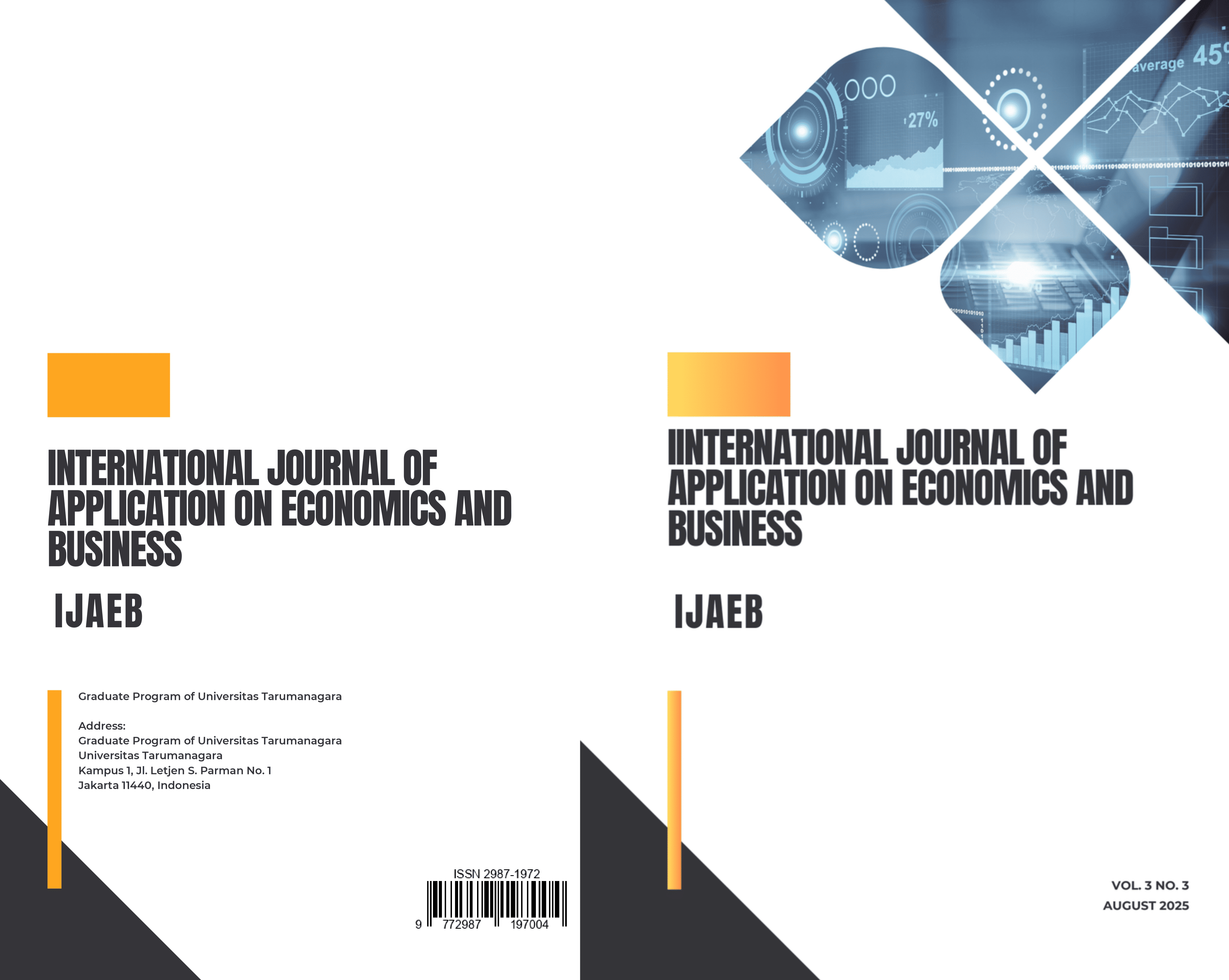CEO BIAS, MORAL HAZARD AND ADVERSE SELECTION: A LITERATURE REVIEW ON RISK DYNAMICS IN DIGITAL BANKING IN INDONESIA, WITH A PITCHING RESEARCH APPROACH
Main Article Content
Abstract
This paper investigates the impact of CEO bias, specifically overconfidence, on the financial sustainability of digital banks and the relationship between these risks. To organize prospective assessment into CEO decision-making within the digital banking industry, the evaluation employs the pitching research methodology (Faff, 2015 and 2024).This study compares and contrasts an array of existing theories and prior academic findings published between 1970 and 2024, categorized into key components such as CEO bias, moral hazard, adverse selection, and fintech solutions, and how each of these interacts with financial sustainability and governance in digital banking. This study indicates that CEO overconfidence plays a critical role in influencing the risk management practices of digital banks, particularly in the context of moral hazard and adverse selection. While fintech innovations such as big data and machine learning have improved banks' ability to assess borrower risk, they cannot fully mitigate the risks posed by information asymmetry, especially when CEO bias skews decision-making. This paper is expected to fill part of a gap in linking the studies of how CEO bias impacts the financial sustainability of digital banks, exposing moral hazard and adverse selection. It provides a practical approach to examining the moderating influence of CEO bias on moral hazard and adverse selection in Indonesia’s digital banking sector, where fintech tools are heavily relied upon. While previous research has focused on the technical risks of fintech solutions, this paper explores how behavioral biases, particularly overconfidence, impact digital banking sustainability.
Article Details

This work is licensed under a Creative Commons Attribution-NonCommercial-ShareAlike 4.0 International License.
This journal provides immediate open access to its content on the principle that making research freely available to the public supports a greater global exchange of knowledge.
IJAEB by Graduate Program of Universitas Tarumanagara is licensed under a Creative Commons Attribution-NonCommercial-ShareAlike 4.0 International License.. Permissions beyond the scope of this license may be available at https://journal.untar.ac.id/index.php/ijaeb
References
Akerlof, G. A. (1970). The market for "lemons": Quality uncertainty and the market mechanism. Quarterly Journal of Economics, 84(3), 488–500. https://doi.org/10.2307/1879431
Baron, R. M., & Kenny, D. A. (1986). The moderator-mediator variable distinction in social psychological research: Conceptual, strategic, and statistical considerations. Journal of Personality and Social Psychology, 51(6), 1173-1182. https://doi.org/10.1037/0022-3514.51.6.1173
Beyhaghi, M., Fracassi, C., & Weitzner, G. (2020). Adverse selection in corporate loan markets. SSRN Electronic Journal. https://doi.org/10.2139/ssrn.3733932
Eisenhardt, K. M. (1989). Agency theory: An assessment and review. Academy of Management Review, 14(1), 57-74. https://doi.org/10.5465/amr.1989.4279003
Faff, R. W. (2015). Pitching research. SSRN Electronic Journal.
Faff, R.W. (2024). Pitching research. SSRN Electronic Journal. http://dx.doi.org/10.2139/ssrn.2462059
Fama, E. F., & Jensen, M. C. (1983). Separation of ownership and control. Journal of Law and Economics, 26(2), 301-325. https://doi.org/10.1086/467037
Fuster, A., Goldsmith-Pinkham, P., Ramadorai, T., & Walther, A. (2019). Predictably unequal? The effects of machine learning on credit markets. SSRN Electronic Journal. https://doi.org/10.1111/jofi.13090
Gompers, P., & Lerner, J. (2001). The venture capital cycle. MIT Press. https://doi.org/10.1023/A:1026557831576
Hackbarth, D. (2008). Managerial traits and capital structure decisions. Journal of Financial and Quantitative Analysis, 43(4), 843-882. http://dx.doi.org/10.1017/S002210900001437X
Holmström, B. (1979). Moral hazard and observability. Bell Journal of Economics, 10(1), 74–91. http://dx.doi.org/10.2307/3003320
Jagtiani, J., & Lemieux, C. (2018). The roles of alternative data and machine learning in fintech lending. Federal Reserve Bank of Philadelphia Working Papers. https://doi.org/10.1111/fima.12295
Jensen, M. C., & Meckling, W. H. (1976). Theory of the firm: Managerial behavior, agency costs, and ownership structure. Journal of Financial Economics, 3(4), 305–360. https://doi.org/10.1016/0304-405X(76)90026-X
Kahneman, D., & Tversky, A. (1979). Prospect theory: An analysis of decision under risk. Econometrica, 47(2), 263–291. https://doi.org/10.2307/1914185
Kaplan, S., & Stromberg, P., (2003), Financial Contracting Theory Meets the Real
World: An Empirical Analysis of Venture Capital Contracts, The Review of Economic Studies, 70, issue 2, p. 281-315, https://doi.org/10.1111/1467-937X.00245
La Porta, R., Lopez-de-Silanes, F., Shleifer, A., & Vishny, R. (1999). Corporate ownership around the world. Journal of Finance, 54(2), 471-517. https://doi.org/10.1111/0022-1082.00115
Malmendier, U., & Tate, G. (2005). CEO overconfidence and corporate investment. Journal of Finance, 60(6), 2661-2700. https://doi.org/10.1111/j.1540-6261.2005.00813.x
Philippon, T. (2016). The fintech opportunity. NBER Working Papers. https://doi.org/10.3386/w22476
Rajan, R. G., & Zingales, L. (1998). Financial dependence and growth. American Economic Review, 88(3), 559-586. https://doi.org/10.3386/w5758
Rothschild, M., & Stiglitz, J. (1976). Equilibrium in competitive insurance markets: An essay on the economics of imperfect information. Quarterly Journal of Economics, 90(4), 629–649. https://doi.org/10.2307/1885326
Shleifer, A., & Vishny, R. W. (1997). A survey of corporate governance. Journal of Finance, 52(2), 737-783. https://doi.org/10.1111/j.1540-6261.1997.tb04820.x
Stiglitz, J. E., & Weiss, A. (1981). Credit rationing in markets with imperfect information. American Economic Review, 71(3), 393–410. https://www.jstor.org/stable/1802787



